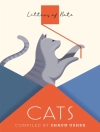An important new examination of Islamic themes in the art of Albrecht Dürer
Albrecht Dürer’s depictions of Muslim figures and subjects are considered by many to be among his most perplexing images. This confusion arises from the assumption that the artist and his northern European contemporaries regarded the Muslim Levant as an exotic faraway land inhabited by hostile adversaries, not a region of neighboring empires affiliated through political and mercantile networks. Susan Dackerman casts Dürer’s art in an entirely new light, focusing on prints that portray cooperation between the Muslim and Christian worlds rather than conflict and war, enabling us to better understand early modern Europe through its visual culture.
In this beautifully illustrated book, Dackerman provides new readings of three of the artist’s most enigmatic print projects—Sea Monster, Knots, and Landscape with Cannon—situating them within historical contexts that reflect productive collaborations between Christendom and Islam, from the artistic and commercial to the ideological and political. Dackerman notes how Gutenberg’s development of printing shares an inextricable relationship to the 1453 Ottoman siege of Constantinople. While Gutenberg’s workshop produced a call to crusade and other publications antagonistic to the Muslim East, Dürer’s prints, she shows, instead emphasize instances of affiliation between Christendom and Islam.
A breathtaking work of scholarship, Dürer’s Knots shows how the artist’s prints of Muslim subjects give expression to the interconnectedness of Christian Europe and the Islamic East.
عن المؤلف
Susan Dackerman is an art historian and curator who has held posts at the Baltimore Museum of Art, Harvard Art Museums, Getty Research Institute, and Stanford University. Her books include
Painted Prints: The Revelation of Color in Northern Renaissance and Baroque Engravings, Etchings, and Woodcuts;
Prints and the Pursuit of Knowledge in Early Modern Europe; and (with Jennifer L. Roberts)
Jasper Johns: Catalogue Raisonné of Monotypes.












